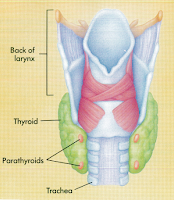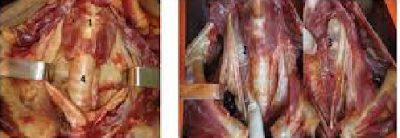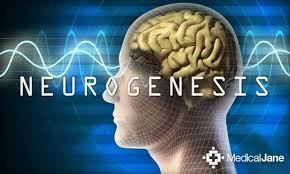what is the process of adrenal glands
the adrenal glands
 he adrenal glands he two adrenal glands are named for their position in the body above (ad meaning "near") the kidneys (renal mean-g "kidney"). Each of these triangular glands has two parts 'with two different functions. The adrenal cortex is the outer, yellowish portion of each adrenal gland. he word cortex comes from a Latin word meaning "bark" d is often used to refer to the outer covering of a tissue,organ, or gland. The adrenal medulla is the inner, reddishprortion of the gland and is surrounded by the cortex. Notsurprisingly, the word medulla comes from a Latin word caning "marrow" or "middle."
he adrenal glands he two adrenal glands are named for their position in the body above (ad meaning "near") the kidneys (renal mean-g "kidney"). Each of these triangular glands has two parts 'with two different functions. The adrenal cortex is the outer, yellowish portion of each adrenal gland. he word cortex comes from a Latin word meaning "bark" d is often used to refer to the outer covering of a tissue,organ, or gland. The adrenal medulla is the inner, reddishprortion of the gland and is surrounded by the cortex. Notsurprisingly, the word medulla comes from a Latin word caning "marrow" or "middle." The adrenal cortex
As you may recall, the anterior pituitary gland secretes the hormone ACTH, adrenocorticotropic hormone. This hormone, as its name implies, stimulates the adrenal cortex to secrete a group of hormones known as corticosteroids. These steroid hormones act on the nucleus of target cells, triggering the cell's hereditary material to produce certain proteins. The two main types of corticosteroids produced by the adrenal cortex are the mineralocorticoids and the glucocorticoids.
The mineralocorticoids are involved in the regulation of the levels of certain ions within the body fluids. The most important of this group of hormones is aldosterone. It affects tubules within the kidneys, stimulating them to reabsorb sodium ions and water from the urine that is being produced, putting these substances back into the blood-stream. The secretion of aldosterone is triggered when the volume of the blood is too low, such as during dehydration or blood loss. Special cells in the kidneys "monitor" the blood pressure. When the blood pressure drops, these cells secrete an enzyme that begins a chain of reactions ending with the secretion of aldosterone. Conversely, when the blood pressure is within a normal range, the cell "detectors" in the kidneys are not stimulated, the release of aldosterone is not triggered, and the kidney tubules are not stimulated to conserve sodium and water.
The glucocorticoids affect glucose metabolism, causing molecules of glucose to be manufactured in the body from non-carbohydrates such as proteins. This glucose enters the bloodstream, is transported to the cells, and is used for energy as part of body's reaction to stress.
Almost everyone is familiar with the term stress. And almost everyone can give examples of stressful situations: their boss "chewing them out" in front of co-workers, their kids fighting constantly with one another, or their sustaining a physical injury. The stress reaction was first described in 1936 by Hans Selye, a researcher who has since become the acknowledged authority on stress. Dr. Selye explained how the body typically reacted to stress—any disturbance that affects the body—and called this reaction the general adaptation syndrome. Over a prolonged period of stress, the body reacts in three stages: (1) the alarm reaction, (2) resistance, and (3) exhaustion. Contrary to maintaining homeostasis within the body, the general adaptation syndrome works to help the body "gear up" to meet an emergency. During the alarm reaction the body goes into quick action. Imagine that you just entered your place of work and your boss confronted you, accusing you—in front of the office staff—of making a costly mistake. Your body reacts with a quickening pulse, increased blood flow, and an increased rate of chemical reactions within your body. Why does your body react in this way? Although the adrenal cortex is involved in the stress reaction, the beginning of the story lies in an understanding of the middle section of the adrenal glands, the adrenal medulla.
The adrenal medulla
The adrenal medulla is different from most other endocrine tissue in that its cells arc derived from cells of the peripheral nervous system and are specialized to secrete hormones. These cells arc triggered by the au
tonomic nervous system, which controls involuntary “automatic" responses. The other major nervous tissues With direct endocrine function are the secretory portion of the hypothalamus in the brain and the posterior Pituitary just under the hypothalamus.
The two principal hormones made by the adrenal medulla are adrenaline and noradrenaline (also called epi. nephrine and norepinephrine). These two hormones are pl.'. manly responsible for the alarm reaction. The hypothalamus is responsible for sending the "alarm signal" to the adrenal medulla. The hypo. thalamus picks up the alarm signal as it monitors changes in the emotions and carries it as nerve signals on tracts of neurons that connect the hypothalamus with the emotional centers in the cerebral cortex. It can therefore sense when the body perceives an emotional stress. It can also sense physical stress, such as cold, bleeding, and poisons in the body. The hypothalamus reacts to stress by readying the body for "fight or flight," first triggering the adrenal medulla to dump adrenaline and noradrenaline into the bloodstream. These hormones cause the heart rate and breathing to quicken, the rate of chemical reactions to increase, and glucose (stored in the liver) to be dumped into the bloodstream. In general, the actions of adrenaline and noradrenaline in-crease the amounts of glucose and oxygen available to the organs and tissues most used for defense: the brain, heart, and skeletal muscles.






























